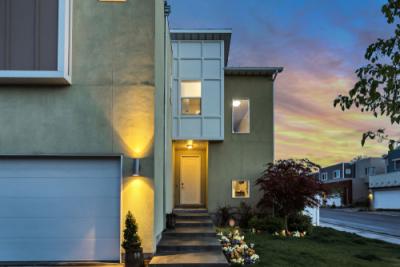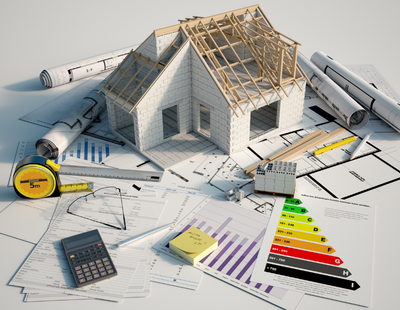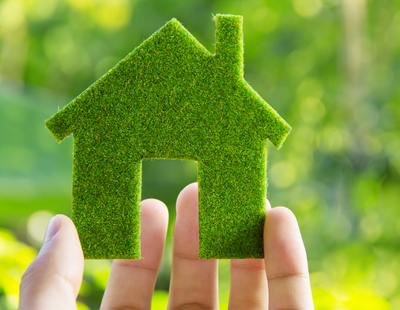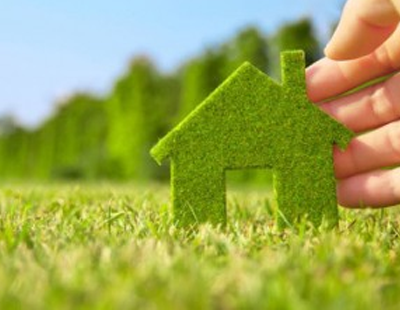By Alan Siggins, indoor ventilation expert and Managing Director of Airflow.
Whilst the UK’s focus on Net Zero and green efforts may have faltered in the last few months, the property industry is still focused on sustainable initiatives. Road transport and minimising plastic waste are at the heart of the UK’s green targets, but responsible building efforts are also essential.
According to the World Green Building Council, buildings account for 39% of global energy-related carbon emissions.
Passive house aims to change this scenario. It’s a concept in construction and a standard for energy efficiency in buildings.
What is a passive house?
A passive house is one that meets the Passive House Standard. These standards prioritise energy efficiency and aim to minimise a building’s impact on the environment. The minimal ecological impact of these houses is where the term passive comes in - the idea is that the building is almost just part of the natural background, rather than actively affecting the environment as traditional houses do.
Passive houses are essentially ultra-low-energy buildings that require minimal energy for heating or cooling. They use clever design and engineering to both generate heat and avoid losing it, such as triple-glazed windows, ventilation with by way of MVHR and high-quality insulation.
Significant savings
The benefits of this type of environmentally friendly home are its eco-friendly design, comfort and noise reduction and the longevity of the house due to the high-quality materials. There is also a positive effect on air quality and mental well-being due to improved sunlight and airflow. Another significant benefit is the energy and cost savings, something particularly on people’s minds as we head into the winter months. Energy costs in passive houses can be up to 90% less than in traditional houses and 75% less than in new-build homes. Whilst there is the cost of installing the required passive house features, in the long run there can be significant savings, for both the wallet and the environment.
According to Passivhaus Trust analysis from 2018, building to the Passive House Standard was 8% more expensive than building a new property without incorporating passive house features. However, energy savings come into effect from the first gas or electricity bill. Plus, passive house dwellers will always be more self-sufficient when it comes to energy usage, leaving them almost entirely unaffected by future price hikes.
As passive house principles become more widely adopted in response to energy efficiency drives, the costs of passive house projects are also coming down.
Retrofitting for sustainability
It’s easier to apply passive house or equivalent principles to a new-build property, where key features can be planned in from day one. However, it’s still possible to implement some of the core passive house features to make an existing home more green. A passive house retrofit won’t usually reach the same levels of insulation as can be achieved with a newly built property. Nonetheless, it’s always worthwhile to adapt older properties to incorporate passive house principles.
One important factor to bear in mind is how much easier it is to install ventilation systems like MVHR (Mechanical Ventilation with Heat Recovery) in new-build properties. When retrofitting MVHR and related systems into an existing property, it’s especially vital to have a thorough site survey first. Semi Rigid duct (AirflexPro) is more compatible with retro fit design than traditional ducting. As it can be customised to each application more easily due to its flexible properties, of which one is low system pressure. This will result in an efficient ventilation system that will help achieve passive house standards.
Carbon reduction
The future of passive houses
In the UK, Scotland is spearheading the movement towards widespread passive house implementation. The Scottish government announced that by the end of 2024, all new residential buildings constructed in Scotland must adhere to the Passive House Standard – or the similar Scottish standard that is currently being designed.
Following a proposal by Alex Rowley, Labour Member of Scottish Parliament (MSP) for Mid Scotland and Fife, the Scottish Parliament has fast-tracked the necessary legislation. The move is part of Scotland’s efforts to reach net zero for greenhouse gases by 2045.
Governments around the world are rightly focusing their energies on energy efficiency and carbon reduction. According to the UN, more than 70 countries have set net-zero targets. Of course we can encounter delays, however, the progress in Scotland towards passive house-equivalent standards is a promising step for a greener property industry.
Despite Net Zero delays, green legislation is still important and soon all kinds of businesses, local councils and property developers will be encouraged to construct buildings in a more environmentally friendly manner.













.jpg)
.jpg)






.png)



Join the conversation
Be the first to comment (please use the comment box below)
Please login to comment